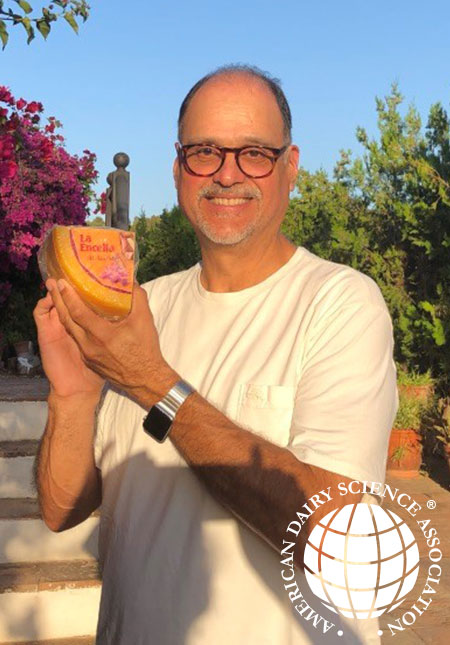
Name: Rafael Jiménez-Flores
Institution: Ohio State University
Current role with ADSA: Past past president
LinkedIn: Rafael Jimenez-Flores
- How long have you been involved with ADSA, and what compelled you to join the association?
I first joined in 1983 as a graduate student; since then, the most compelling reason to be an ADSA member has been the chance to share and exchange ideas on dairy foods research. It was then and it is still the best forum for dairy research and, in particular, dairy foods advances. ADSA has been the place to go, and Journal of Dairy Science (and now also JDS Communications) is the place to find inspiration for my research and where my students’ work is best presented.
- What do you enjoy most about being a board member?
I have been impressed by how professionals and scientists in dairy science voluntarily participate and work together to maintain communication and ideas that help the industry keep renewing. Governance of the association has its challenges but the common goals of science and dedication to the dairy industry are rewarding.
- Why is it important for the dairy science community to participate in the association?
There is an increasing trend in people’s interest in nutrition and health, as well as new trends in commerce and technology. Milk and its derivatives have a substantial role to play in human nutrition as per historical and “co-evolutionary” entities. However, there are challenges in understanding how to best describe the benefits, minimize the risk, and, in general, find the truth about dairy. The only way to the truth is through rigorous scientific exploration. ADSA is a forum in which new ideas can be presented and tested.
- What do you think is the most important resource that ADSA provides the scientific community?
ADSA really has two primary resources: the journals (Journal of Dairy Science and JDS Communications) and the annual meeting. This represents both an asset and a weakness. The times require that ADSA do more for its members.
- What strategic initiative of ADSA are you most passionate about and why?
Our most important task is communication. The strategic position to have a dedicated manager of communications for ADSA is our most urgent need. Communicating through social media, publicizing the most important scientific findings from the journals, and creating links with writers of scientific advances in the popular press are ways to reach the public as well as the wider scientific and academic communities. It is critically important to be part of the food culture that keeps expanding in the United States and worldwide!
- What is one pressing challenge for the future of the dairy industry and how is ADSA addressing that through its new strategic plan?
The academic field devoted to commodities such as milk and dairy is eroding. ADSA should offer a home for scientists in all fields—chemistry, biochemistry, microbiology, endocrinology, nutrition, molecular biology, engineering, marketing, consumer science, sensory science, and other fields of food science—who are interested in dairy-related research and milk-related issues. An equal challenge is to get the food industry involved, especially in areas that are not always represented at our annual meeting; for example, packaging, machinery and equipment, retailers, distributors and exporters of food, among others.